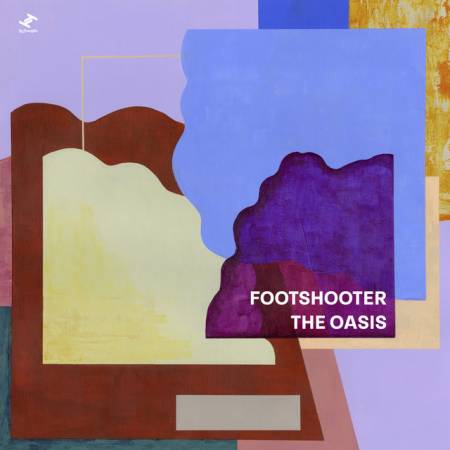British musician Bonobo has traversed a wide array of styles to the point where it’s actually difficult to pin down what he’s going to do next. And so far, it feels like he's always gone through styles per two albums. Dial M for Monkey and Animal Magic embraced the dusty, sample laden downtempo aesthetic. A cinematic flair adored in South American influences and nu-jazz informed Days to Come and Black Sands. And now, we’re currently experiencing a Bonobo that is likened with acts such as Four Tet, Tycho, Caribou, and even George Fitzgerald by virtue of his contemporary electronica transition. Below I rank Bonobo’s 6 albums starting from the ones I least liked, to the ones that blew me away and kept me coming back for more.

Animal Magic
Honestly Animal Magic wouldn’t be an ideal way to introduce someone to Bonobo. Even though it is Greene’s debut album, when matched up against the rest of his versatile catalog it falls short by virtue of its passive nature. For its time, I definitely think it was significant though especially considering that downtempo was experiencing an upsurge in popularity during the late 90s and early 2000s. In the album Bonobo superbly flaunts his aptitude when it comes to sampling, and we’re delicately teased with ‘world sounds’ on occasion. Some may say this was a slight glimpse into the future sound of Bonobo. A few of the stand out tracks on here include Silver, Terrapin, and The Plug.
Stay up to date.
New music and exclusive updates in your inbox weekly.
Dial 'M' for Monkey
This was the first Bonobo album I heard, with "Flutter" being the first Bonobo track which swept me off my feet. Dial M for Monkey actually sounds like a literal continuation of Animal Magic… Think about it, both albums heavily lean towards hip hop for their sampling and looping techniques. But Dial M doesn’t quite linger in the background. The bright glockenspiel cascading throughout "Flutter" and the boisterous low end on "Wayward Bob" are just a few examples of Bonobo vies for our undivided attention. This is further accentuated by the compelling surprises we’re acquainted with thanks to the ravishing arrangements on Dial 'M' For Monkey.
Migration
Migration is certainly one of the seminal works in Bonobo’s catalog, although it only dawned upon me as I was writing this that – I actually felt no connection to the project as a whole. Simon relinquished the downtempo aesthetic and adopted a grainy electronic sound tethered together by pervasive 4/4 and two-step and rhythms, including exultant cinematic sections that enliven tracks like “Ontario” and “Figures”. Now, this sounds dazzling but uggghh, personally, it felt like technically stellar music which lacked the kind of soul and vibrancy which was prevalent in his previous works. Resident Advisor I think said it best, “it's like a faded photocopy of its predecessor”. Our emotions are sent on a roller coaster ride throughout the album, but not quite the roller coaster ride where you’re screaming “YES YES I WANNA DO IT AGAIN”.
Days to Come
There was a point in time where I found myself really attached to the track “Nightlight” – a jubilant tune decorated with a seductive vocal performance from Bajka. The exotic charm of “Nightlight” pretty much lured me to Days to Come. It’s clear that this album was a turning point for Simon as this was the first time he tapped guest vocalists and many of the track are meticulously orchestrated, full-bodied works that wholly engulf the listener. I can’t neglect to mention the pervading Latin American and jazz influence, to the point where it’d be a tad disrespectful to merely lump him in the downtempo category. This is also the album where you’ll find some of the best drum arrangements from Bonobo, and “Transmission 94 (Parts 1 & 2)” is a stellar example!
Black Sands
If you’ve seen Bonobo live over the past couple of years, you’ll notice that a large chunk of the tracks are from this album (unless it was his Migration tour). That’s no surprise considering that this is his most lauded effort, boasting tracks like “Animals”, “Kiara” and the utterly sensational “Black Sands” soundtrack that begs mentions amongst newly acquainted Bonobo fans. The album is COLOSSAL and it’s almost as if he transformed himself into a one-man orchestra with a total of 12 different instruments played by Simon throughout the record. Before he was pretty much lumped in the trip hop/ downtempo space but the sound of Black Sands catapulted him into the realms of acts like Cinematic Orchestra and Snarky Puppy whilst still holding on to the World influences we were temporarily acquainted with from Days to Come.
The North Borders
Something I find VERY fascinating about this album is the fact that it rests on an elevated pedestal shrouded by soaring clouds in the eyes of many DJ’s and producers, yet critically it hasn’t been acquainted with acclaim. It’s certainly one of those underrated gems that have informed the sound of countless musicians, and with the sound of The North Borders we were swiftly ushered into a new era of Bonobo as programmed 4/4, two-step and other off-kilter rhythms dismissed the live drums we were accustomed to from his previous records. The North Borders also harbors arguably one of Bonobo’s most iconic tracks – and that is "Cirrus".








